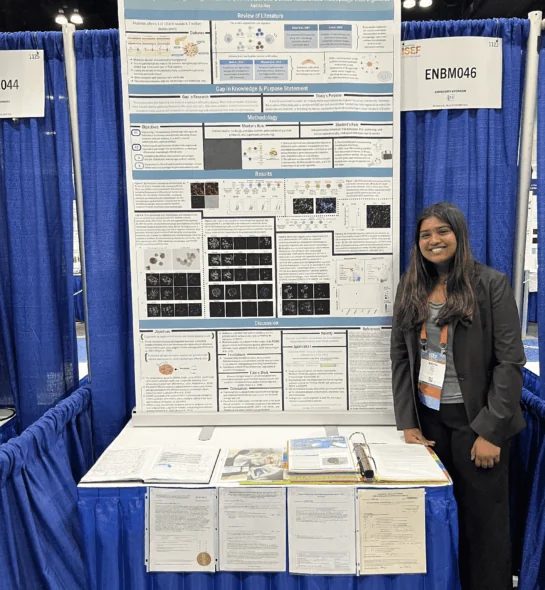Deeper Dive
My research focused on developing a human-pluripotent stem cell-derived, vascularized macrophage-islet organoid to study macrophage-beta cell interactions. Collaborating with other labs, my mentors and I analyzed immune cell changes in COVID-19 pancreatic samples, discovering the accumulation of proinflammatory macrophages. Using single-cell RNA-seq, we identified proinflammatory macrophages and pyroptosis in cells infected by SARS-CoV-2 or Coxsackievirus B4. My role was to distinguish between virus-induced and proinflammatory macrophage-mediated cell pyroptosis. I developed organoids containing pancreatic endocrine cells, endothelial cells, and macrophages. This model provided the first definitive demonstration that pro-inflammatory macrophages cause β-cell death by pyroptosis, supported by the upregulation of specific genes.
Recent studies have shown that COVID-19 survivors have a higher risk of developing diabetes. Using my organoid system and comparing it to COVID-infected human islets, my mentor found that the TNFSF12-TNFRSF12A pathway contributes to macrophage activation due to COVID-19. This novel organoid model enables testing drugs that block key signaling pathways, such as this pathway, CASP1, and GSDMD, to prevent pyroptosis, preserve β-cells, and manage, cure, and prevent diabetes.
According to the International Diabetes Federation, approximately 415 million adults had diabetes in 2015, and this number is expected to rise by another 200 million by 2040. Diabetes is the most expensive chronic condition in the US, with 25% of total healthcare costs spent on treating people with diabetes. This translates to $237 billion in direct medical costs and $90 billion in indirect costs of reduced productivity. Though many drugs are available for controlling sugar levels, none are effective at preserving β-cell mass, a feature common to all kinds of diabetes. My organoid model can be used to study the key pathways causing 'pyroptotic death' of pancreatic β-cells and identify targets for pharmacological intervention. Pyroptosis is already being considered a preventative and therapeutic target for other diseases like stroke, which people with diabetes are at higher risk of developing. If a common target is identified in studies using this organoid system, there is potential for repurposing drug candidates and accelerating the path to clinical trials for diabetes. Preserving β-cell mass will be a long-lasting strategy for controlling diabetes and reducing its economic and social burden.



